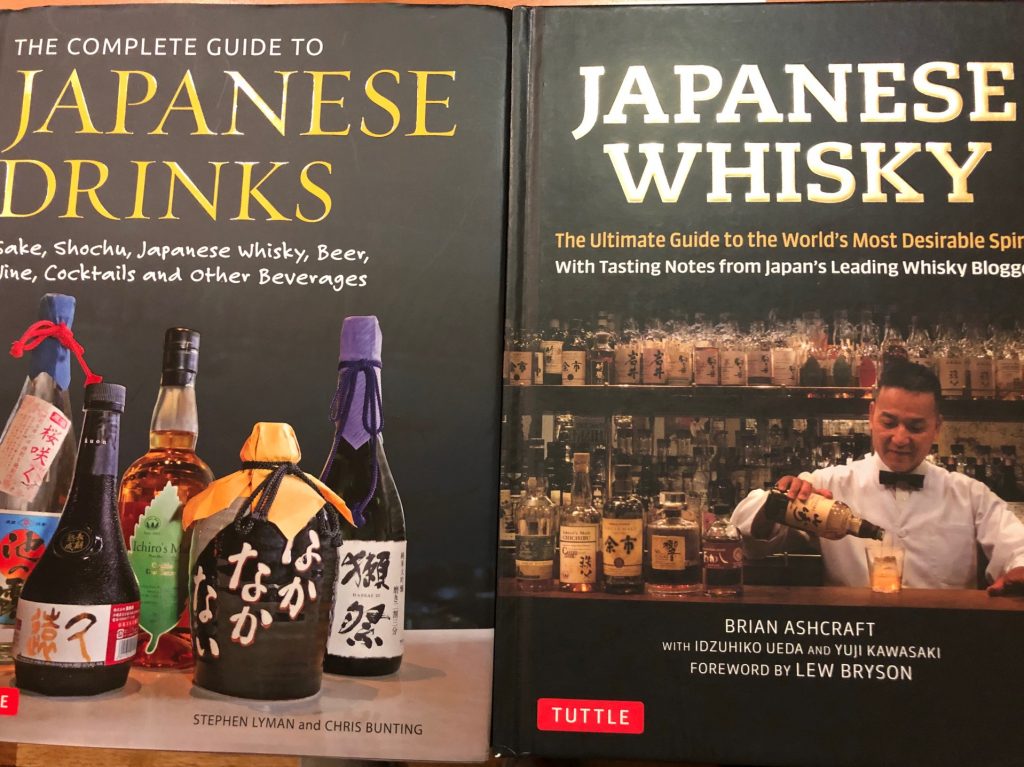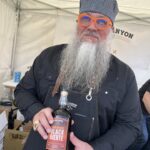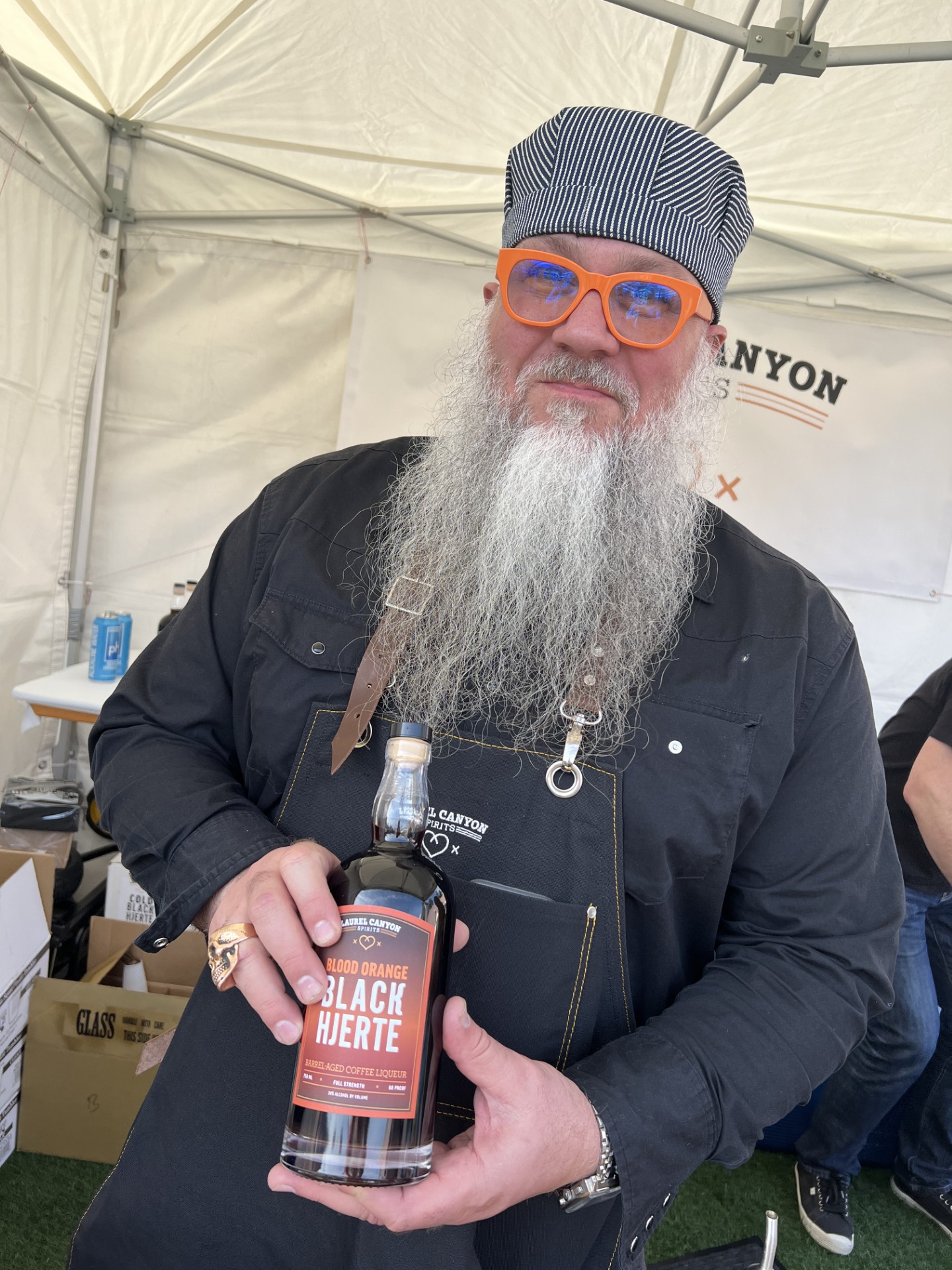On September 27 I did a review of the book Japanese Drinks on this website; today I have a second book on Japanese Whisky alone for you. Similar in format with lots of glossy photos and understandable text, I was impressed with the work of the Japanese distillers and distilleries, their challenges, the differences between them and their Scottish counterparts and some amazing reviews of many whiskies made by six of the leaders.
 Some of the information on whisky was covered in the first book I reviewed so I will limit my review to what was new for me to share with you from this second book:
Some of the information on whisky was covered in the first book I reviewed so I will limit my review to what was new for me to share with you from this second book:
- Between 2001 and 2017 Suntory and Nikka whiskies have won over a hundred accolades from prestigious international competitions.
- Instead of adopting the spelling as “whiskey” like we do in the states, Japan uses “whisky” along with Canada and Scotland.
- Some distillers started out as sake brewers, some continue to make both (sake is traditionally only made in the winter months). Some copper stills were used for shochu making before they were used for whisky. Many big distilleries have their pot stills made in Japan (and their own cooperages) while smaller ones rely on imports. Most distill the spirit only one time.
- There are “Japanese twists” to not doing everything the Scottish way in malting, fermentation, distillation, maturation and more. Most malted barley is imported. Most whisky is colored with natural caramel food coloring.
- Japanese whisky was first exported to the U.S. in 1934, a year after the end of prohibition. It wasn’t very popular, and with the onset of World War II this grew worse. However, during this period it grew in popularity in Japan.
- Japanese whisky is considered “highly aromatic and floral.”
- Some Japanese blenders eat the same food for lunch every day to “ensure a consistent” palate. Others avoid fish due to the oils and garlic for its lingering quality.
- Mizunara, a rare Japanese white oak, is sometimes used for casks. The word “mizu” means water that the oak retains and “nara” means oak. This Japanese oak was originally used as sherry casks were hard to get in Japan during World War II. The oak is known to “expand the range of flowers” and other aromas in the whisky. There are downfalls: the wood is difficult to work with and all will leak at some point.
- At Suntory Yamazaki Distillery they are experimenting with plum wine casks (the also make plum wine) for the finish on some whiskies. They are also aging some whisky in cedar casks.
- Masataka Taketsuru, the founder of Nikka Distillery, started his career in Scotland learning all he could about making whisky. From there he became the first distiller in Japan – at Suntory’s Yamazaki Distillery.
- Venture Whisky Chichibu Distillery has planted their own Mizunara trees – unfortunately they won’t mature for use for at least 150 years.
- Currently there are ideas on using local peat, other local woods and Japanese barley. Smaller distilleries are exploring the idea of working together.
Whisky Reviews
The over 100 reviews are by leading Japanese whisky blogger Yuji Kawasaki. I found these most interesting as some of the descriptors were familiar as ones I’ve used before but others, more in the line of calling up a memory, were not familiar as I don’t live in Japan. Some of my favorites include:
It’s Japanese sliding doors, a tatami room with a flower vase in an alcove and a bird fluttering from a branch. In a whisky, it’s rare to see such beauty as this. Hibiki Deep Harmony.
…it’s rose thorns and faint smoke for an experience that’s reminiscent of hazy sunlight in a gloomy sky. Miyagikyo Single Malt (no age statement).
…it’s like a bouquet of flowers was chucked out of the glass and directly in your face. Miyagikyo Single Malt, 15 YO.
There’s Japanese incense as well as a chalky notes that is reminiscent of the lime powder used on baseball fields. The Nikka Whisky 1999, 34 YO.
There’s a warm bushel of flowers and a slightly open wooden gate leading into a house with a dining table. On it there are grapes and pears waiting to be devoured…Ichiro Malt Five of Spades.
It passes through like an arm going into a sleeve until its one with you in a relaxing and natural way. Ichiro’s Malt Two of Clubs
These descriptions made my mouth water, what about you? Get your book here à https://www.tuttlepublishing.com/japan/japanese-whisky
Eve Bushman has a Level Two Intermediate Certification from the Wine and Spirits Education Trust (WSET), a “certification in first globally-recognized course” as an American Wine Specialist ® from the North American Sommelier Association (NASA), Level 1 Sake Award from WSET, was the subject of a 60-minute Wine Immersion video (over 16k views), authored “Wine Etiquette for Everyone” and has served as a judge for the Long Beach Grand Cru and the Global Wine Awards. You can email Eve@EveWine101.com to ask a question about wine or spirits.










